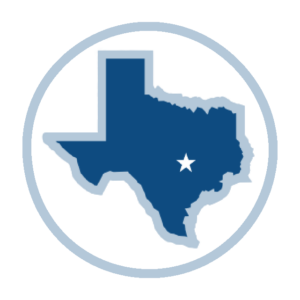The governing body of the public retirement system and the associated governmental entity (sponsor) is required to formulate a funding soundness restoration plan (FSRP) if it meets any of the triggering criteria:
An FSRP is due two years from the valuation date of the actuarial valuation that triggered the requirement to formulate the FSRP. The agreed-to FSRP must be received by the PRB by the 31st day after the day the plan is agreed to.
In most cases, if a system triggers a second FSRP within 10 years of the due date of the previous FSRP, the system is required to complete an R-FSRP instead of an FSRP.
Systems with legacy FSRPs and other systems that qualify for the Revised FSRP Exemption (see description below) would complete an FSRP rather than an R-FSRP.
PRB rules allow a retirement system to prepare a V-FSRP without first becoming subject to the FSRP requirement. A V-FSRP must follow most of the submission requirements outlined in statute and rules to be accepted.
There are advantages to preparing a V-FSRP:
The PRB has created a variety of graphics and educational materials to help system trustees and administrators understand the FSRP requirements. Click here to view the FSRP educational materials.
When submitting an FSRP, please complete and submit the Funding Soundness Restoration Plan Coversheet form along with the required materials. Click here to access the form.
PRB Staff provides its board with periodic updates on systems that have submitted FSRPs. View the recent reports below. Older reports may be found in board meeting packets.
The statutory requirements for Funding Soundness Restoration Plans (FSRPs) can be found in Sections 802.2015 or 802.2016 of the Texas Government Code.
Rules related to preparation, submission, and compliance with FSRPs can be found in 40 T.A.C. Chapter 610.
The PRB’s “Policy for Promoting Compliance with Funding Soundness Restoration Plans Requirements,” outlines action the PRB or staff will take, including actions if an FSRP is missing or noncompliant.
Systems that are subject to an FSRP are required to provide periodic updates on their progress while preparing the plan.
Please note this is a minimum requirement. Your update may include additional information, beyond the minimum requirement.
For example, a system with a triggering valuation date of Dec. 31, 2024, would have the first update due by Dec. 31, 2025. The second update would be due by June 30, 2026, and the FSRP would need to be submitted by Dec. 31, 2026.
Deadline: FSRPs for systems that triggered the requirement prior to Sept. 1, 2023, must be submitted no later than Sept. 1, 2025. All other FSRPs must be submitted within two years of the valuation date of the actuarial valuation (AV) that triggered the FSRP.
The PRB staff actuary or board actuary will determine if this analysis is consistent with actuarial standards of practice.
Some systems may qualify for the Revised FSRP Exemption described in statute. If a qualified system triggered a new FSRP during the 10-year eligibility period for an FSRP, it would complete a standard FSRP rather than an R-FSRP.
To qualify for the exemption, a system must have a funding period between 30 and 40 years and meet one of two additional conditions:
Compliance corridors are used to determine if a system is adhering to an FSRP to qualify for the exemption. Compliance corridors have a baseline and a corridor of variation from that baseline that narrows towards the end of the exemption period. As long as the system’s funding period or funded ratio remains within the corridor, it would be considered adherent.
There are two types of compliance corridors for FSRPs submitted between Sept. 1, 2021, and Sept. 1, 2025:
You can find the sizes of these corridors around the baseline in the tables here.
Systems with L-FSRPs have the option to establish compliance corridors for the purpose of qualifying for the exemption. To do this, the system would need to submit its own asset-liability projection, similar to what is required for systems completing FSRPs under current statute. If the L-FSRP system decides not to submit a projection, the system would only have a funding period corridor with a baseline of a one-year-per-year reduction while the system’s funding period remains above 40 years. If the system’s funding period is less than 40 years, then the baseline would remain at 40 years. You can find the sizes of these corridors around the baseline in the tables here.
In August 2022, the PRB gave a presentation covering FSRPs at the 2022 Annual TEXPERS Summer Educational Forum. Click here to view the presentation.
